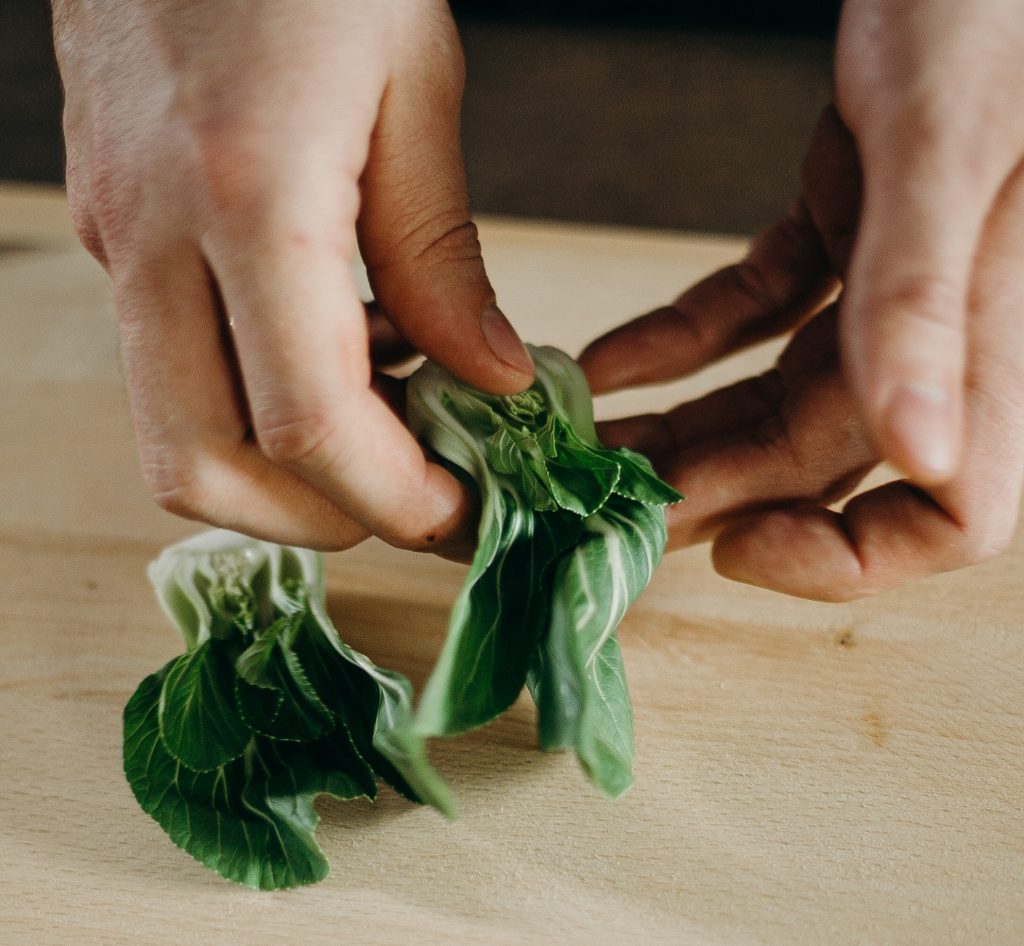Most Asian greens are in the same plant family as some other veggies we know and love, like broccoli and kale. Asian greens are a source of iron, calcium, manganese, potassium, phosphorus, and vitamins A, C, and K. Eating Asian greens regularly is a delicious and easy way to add these important nutrients to your diet, which can help maintain your overall health and decrease risk for some chronic diseases.

Here’s a simple introduction to four of the most popular Asian greens:
1) Napa Cabbage is well-known for its use in making kimchi, a traditional Korean fermented dish. Making kimchi is a great way to preserve this green so it can be eaten in the winter months. An extremely versatile green, Napa cabbage can be used in a multitude of ways, including grilling, roasting, stir-frying, or as a fresh salad ingredient.
2) Tatsoi has small dark green leaves and light colored stems. Like many Asian greens, it has a pleasant, mildly spicy flavor. The leaves can be used in recipes featuring spinach, such as salads, sautés, or smoothies.
3) Mizuna looks similar to arugula, but its flavor has a mustard-like kick. Try adding mizuna to a sandwich instead of lettuce for a new flavor, or sauté it to add to an omelet. Mizuna leaves can be used like spinach in fresh salads, steamed for a side-dish, or added to your favorite smoothie.
4) Bok Choy meaning “white vegetable,” is named after its white, celery-like stems. It has a sweet and mild flavor. Both the leaves and stems are frequently used in stir-fries, soups, and other dishes. Easy Stir-Fry Bok Choy Recipe
What are Asian Greens?
“Asian greens” is a general term used to refer to a group of vegetables that have been used in Asian cuisine for centuries. In recent years, many types of Asian greens have become available in grocery stores and farmers’ markets.
Did you know?
Asian greens grow well in Colorado because of our cooler weather. They are often available from early spring to late fall, making them an easy vegetable choice for much of the year.
Grow your own!
Why not grow your own Asian greens? Plant a few new seeds every two weeks throughout the spring so you can have a staggered harvest during the summer. Then plant more in the fall to have late season fresh veggies.


